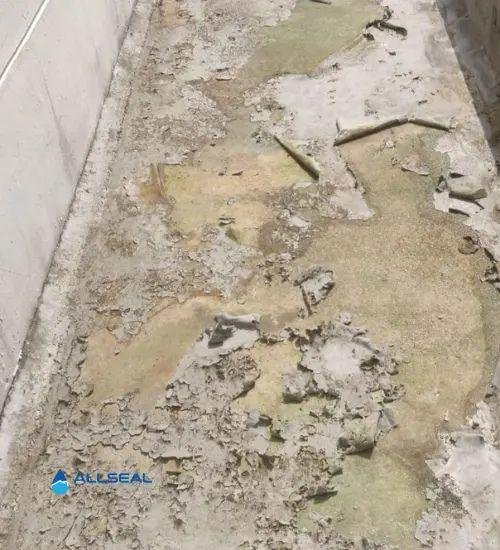Post-Repair Waterproofing Maintenance: What Homeowners Must Know

In Singapore’s humid, tropical climate, waterproofing isn’t just a construction necessity—it's a vital component of long-term property care. While much emphasis is often placed on the initial installation of waterproofing systems, the role of post-repair maintenance is equally critical. After waterproofing repairs are completed, many homeowners assume the problem is solved for good. Unfortunately, this assumption can lead to recurring issues, structural damage, and costly rework.
To ensure durability and performance, post-repair waterproofing maintenance must become a proactive routine rather than a reactive response. Engaging a trusted waterproofing specialist in Singapore not only helps fix existing problems but also empowers homeowners with the knowledge and tools needed for sustainable protection.
Understanding Post-Repair Maintenance
Waterproofing repair addresses a specific issue—cracks, leaks, damaged membranes, or degraded sealants. However, just like any other component in a building, waterproofing materials age, weather, and deteriorate. Post-repair maintenance involves regular inspection, preventive care, and timely action to keep these systems intact.
In shared environments such as condominiums or private homes with multiple levels and functional zones, neglecting post-repair upkeep can undo months of work and investment. The ultimate goal of this maintenance phase is to extend the life of the waterproofing system while minimizing the risk of future water intrusion.
Why Maintenance Matters After Waterproofing Repairs
Waterproofing systems are designed to endure specific environmental and structural conditions. Singapore's frequent rainfall, high humidity, and rapid temperature changes create unique challenges. Even after professional repairs, several factors can compromise waterproofing integrity:
-
Continuous foot traffic over repaired balconies or decks
-
Accumulation of debris and clogged drains
-
Shifting substrates in older buildings
-
UV exposure weakening protective coatings
-
Expansion and contraction due to thermal variations
-
Invasive vegetation or root systems in planter boxes
A well-thought-out post-repair maintenance plan mitigates these risks and keeps the property protected.
Key Areas to Monitor After Waterproofing Repairs
Depending on the nature of the waterproofing work, different parts of the property require targeted attention. Below are key areas where homeowners must remain vigilant post-repair.
Flat Roofs and Terraces
After waterproofing is reapplied to a rooftop or terrace, ensure regular cleaning of the surface to prevent algae buildup and ponding water. Check for pooling after rain and monitor any signs of bubbling, blistering, or delamination of membranes.
External Walls and Expansion Joints
External vertical surfaces often receive sealant and waterproof coatings. These should be checked for hairline cracks or fading, particularly after heavy storms. Pay attention to expansion joints, which require flexible maintenance and can be entry points for moisture if not sealed properly.
Toilets and Wet Rooms
Toilets and bathrooms are prone to hidden leaks. Repaired waterproofing in these areas should be protected from aggressive chemical cleaners that degrade membranes. Watch for loose tiles, persistent dampness, or stains on the ceiling below.
Planter Boxes and Balconies
In these areas, overwatering plants or soil pressure may compromise waterproofing. Maintain appropriate soil levels and avoid placing heavy planters directly over repaired sections.
Basement and Below-Ground Spaces
If waterproofing repairs were made in underground areas, monitor for musty smells or wall discoloration. Ensure that drainage systems are working correctly and sump pumps are tested periodically.
Best Practices for Post-Repair Waterproofing Maintenance
Adopting good maintenance habits protects your investment. Here are essential steps that every homeowner in Singapore should follow:
Maintain a Waterproofing Log
Keep a record of repair dates, contractor details, materials used, and warranties provided. This helps in assessing performance over time and assists a waterproofing specialist in Singapore during future evaluations.
Conduct Visual Inspections Monthly
Walk around the repaired zones monthly. Look for fresh cracks, peeling surfaces, damp spots, or unusual changes in color or texture. Early detection can prevent widespread issues.
Ensure Clean Drainage Systems
Clogged drains are a leading cause of water overflow and seepage. Remove leaves, moss, and sediment from roof drains, balcony scuppers, and yard sumps regularly. Ensure that gutter downpipes are free of obstructions.
Use Compatible Cleaners
Only use pH-neutral or recommended cleaning solutions on waterproofed areas. Harsh chemicals and high-pressure washers can wear down membranes or coatings faster.
Minimize Surface Load
Avoid placing heavy furniture or structures directly above repaired zones—especially those treated with liquid-applied membranes or bituminous sheets. Overload can cause cracks or depressions that compromise protection.
Reapply Protective Coatings When Needed
Some waterproofing systems require reapplication of protective top coats every few years. Consult with your waterproofing contractor about recommended intervals based on the system used.
When to Engage a Waterproofing Specialist in Singapore
While DIY inspection is encouraged, there are circumstances where professional expertise becomes essential. Engage a waterproofing specialist when:
-
You observe recurring leaks in the same spot
-
Stains or mold reappear despite previous repairs
-
The building has shifted or settled significantly
-
Major renovations are planned in previously repaired zones
-
Warranty periods are nearing expiry and assessments are required
A certified waterproofing specialist in Singapore brings technical insights, advanced diagnostic tools, and local experience that align with the country's climatic and regulatory conditions.
Creating a Waterproofing Maintenance Schedule
A structured maintenance calendar ensures that nothing is overlooked. Here is a sample schedule Singapore homeowners can adopt:
Quarterly:
-
Visual inspection of all treated areas
-
Check drainage systems and gutters
-
Remove surface debris and plant matter
Biannually:
-
Engage a waterproofing specialist for assessment
-
Test waterproofing in wet areas using moisture meters
-
Evaluate and touch up sealants on joints or cracks
Annually:
-
Review waterproofing records and warranties
-
Reapply top coatings if recommended
-
Pressure test balcony floors (if applicable)
Regular follow-ups keep the system in peak condition and reduce the risk of unexpected failures.
Educating Residents in Shared Facilities
In shared residential properties like condominiums, post-repair waterproofing maintenance becomes a joint responsibility. Property managers should:
-
Communicate maintenance schedules with all residents
-
Provide guidelines for responsible water usage in shared balconies or planter zones
-
Encourage early reporting of signs such as peeling paint, odors, or leaks
-
Partner with a waterproofing specialist in Singapore for annual seminars or awareness drives
This promotes accountability and extends the value of repair works across the community.
Common Mistakes Homeowners Should Avoid
Mistakes in post-repair maintenance often come from misinformation or oversight. Here are pitfalls to watch for:
-
Delaying inspections assuming the job is permanent
-
Neglecting cleaning and allowing blockages to form
-
Applying incompatible paints or adhesives over waterproofed surfaces
-
Overlooking maintenance in invisible areas such as underneath tiling
-
Failing to track the lifecycle of waterproofing systems and warranties
Avoiding these mistakes is essential for keeping your home watertight and free from costly damage.
The Long-Term Value of Maintenance
Investing time and resources in post-repair waterproofing maintenance results in several long-term benefits:
-
Increased lifespan of waterproofing systems
-
Lower repair costs by catching issues early
-
Preserved property value and market appeal
-
Healthier indoor air quality by preventing mold and mildew
-
Peace of mind for homeowners and tenants
These advantages underscore the importance of maintaining waterproofed areas diligently and professionally.
Conclusion
Waterproofing repair is not the end of the journey—it marks the beginning of ongoing care and vigilance. Without consistent post-repair maintenance, even the most advanced systems can fail under the pressure of daily use and environmental exposure.
Singapore’s climate demands strategic attention to moisture management, especially in homes and shared facilities. By adopting best practices, conducting regular checks, and partnering with a reliable waterproofing specialist in Singapore, homeowners can ensure their living spaces remain dry, safe, and structurally sound for years to come.
Waterproofing is a long-term investment, and its protection depends not only on quality repair but also on continuous care. With the right approach, your post-repair waterproofing system will stand the test of time, rain, and tropical wear.





